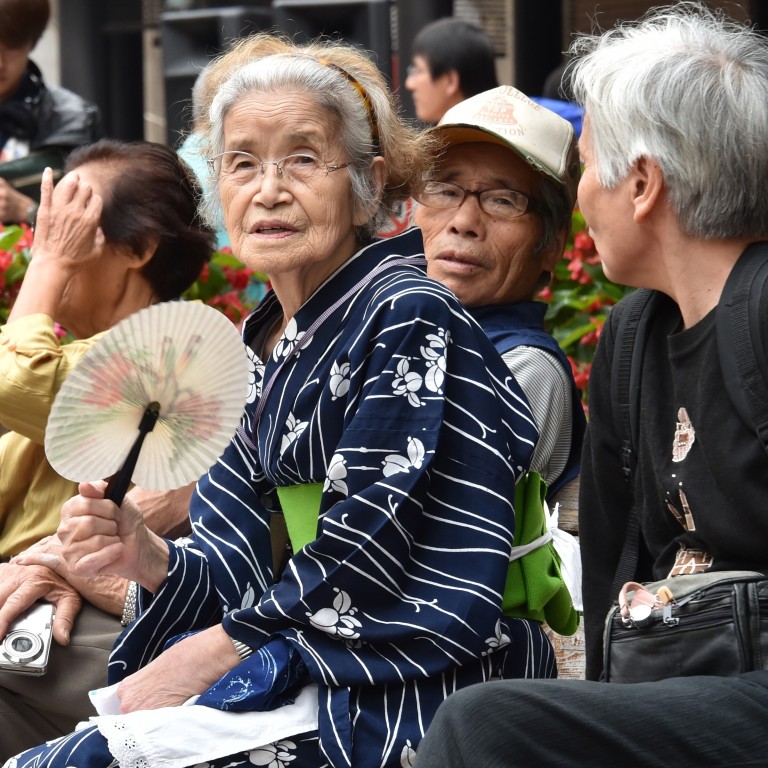
Big data and your bladder: sensors detect when elderly need to pee
- Sensors in a senior citizen’s refrigerator, bathroom and bedroom tell care manager how much they have slept, and whether they have eaten and used the bathroom
- In other experiments, a wearable sensor monitors bladder size to show when a patient needs to urinate, and AI-driven phone calls check for health abnormalities
Devices connected to the internet and artificial intelligence (AI) are being introduced to nursing care in Japan. There is a shortage of carers in the country because of its ageing society and because the coronavirus pandemic is restricting face-to-face contact.
“You went to the bathroom many times yesterday,” a care manager says over the phone to a man as he checks data on his recent routine.
The man’s home is equipped with sensors installed in the bathroom, bedroom and refrigerator, as well as attached to doors, providing the care manager with data via the internet on how frequently he uses the bathroom, how long he sleeps and whether he has eaten.

The sensors do not emit light or sound so as not to bother the householder.
The city of Miyakonojo in Miyazaki prefecture, southwestern Japan, has tried using data collected by the devices to create care plans for people in its “digital care management” project, and assessed its effectiveness last year.
Japanese still top three for life expectancy – but Hongkongers are top
Shinichi Omine, deputy head of the group, said he felt “data can turn users’ worries into a sense of security”.
A wearable device that indicates when it’s time to urinate is helping carers and care recipients alike.

Triple W Japan, a Tokyo-based internet technology firm, developed the device, DFree, featuring a sensor that can measure bladder size using ultrasound and notify carers through the internet when it reaches a certain size and it’s time for their client to go to the bathroom.
“Cleaning up after a toilet mishap is a heavy burden on care workers, both in terms of time and physical effort,” said Masaya Matsumura, 34, of Social Welfare Corporation Zenkoukai in Tokyo, which runs a number of nursing homes in Japan. He says the device “helps maintain the dignity of the elderly” by preventing them from wetting themselves.
Nara prefecture in western Japan is starting a trial of an AI phone-call service to check the health of senior citizens daily.
The secret to a long life? It’s in the Okinawa diet
In the trial, which also involves mobile phone operator NTT Docomo, the AI asks people whether they are in pain. If, for example, they reply that their knees hurt, the AI will ask how long they have had the symptoms and whether they have gone to see a doctor.
If the people say they are not feeling well or if they do not respond to calls, a family member will be notified.
There were about 1.95 million care workers in Japan in the 2017 financial year. The industry’s jobs-to-applicants ratio remains more than twice as high as the average for all industries, reflecting a chronic labour shortage in the sector.

